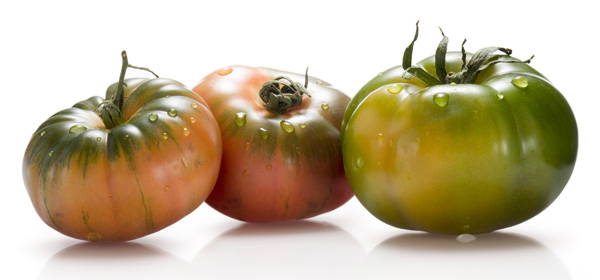 story by Char Vandermeer
story by Char Vandermeer
I confess. I judge books by their covers. I’ll happily lay down an extra couple of dollars for the bottle of wine with the well-designed label. And yes, this unfortunate tendency extends to my little garden. For the past several years, containers sprouting heirlooms with awesome names (Mr. Stripey, Dragon’s Egg, Boothby’s Blonde, Painted Lady) and gorgeous packaging have taken up every available inch of dirt. Alas, the packaging often seems to be better than the yield.
After spending the long cold winter months trolling the interwebs, and interviewing farmers and growers who really know their stuff, this gardener came to a shocking realization: Maybe there really is a difference between art and science. And, like a lot of gardeners who had eagerly embraced heirloom plants—from the bounty that gets laid out on summer weekends at Headhouse Square and the homespun pride that comes from sticking with time-honored crops rather than the products of some laboratory somewhere—I began to question whether “old-fashioned” always translated to “better.”
But first, a few words about the heirloom are in order. It’s hard to define precisely the term “heirloom,” but for our purposes, let’s just call them open-pollinated (like, by bees) seeds that have been passed down from generation to generation. That passing down is the chief attraction: The nostalgia factor is alluringly high in heirloom collecting. What we now consider “heirlooms” are essentially brilliant mistakes: plants that cross-pollinated naturally to produce a new breed superior to its parents in flavor and yield. Those resulting successes are then propagated from one growing season to the next through seed saving; each season’s tomato grows from the seeds of last summer’s crop. This may well mean that a Brandywine tomato grown successfully from generations of saved seeds in Pennsylvania may differ slightly from a Brandywine grown in Michigan, from generations of saved Michigan seeds; however, the unique flavor traits of the fruit survive generation to generation, region to region.
This is where the hard-and-fast distinction between the dirty-fingernailed farmer and the wonk in a lab coat breaks down, though: That Brandywine tomato is just an old-school version of a modern hybrid. In a nutshell, modern hybrids are produced by crossing two parent plants using controlled (usually by hand) pollination. This labor-intensive process produces a plant that is certain to carry specific traits from each parent, typically the dominant flavor and texture of one, and the disease-resistance of the other. The resulting first-generation hybrid (F1) will be a tougher plant with higher yields because of this highly controlled background. Because the original cross must be replicated each year to ensure that the balance of desired traits remains stable, the plants can also be quite costly. Even the seeds of the most famous and enduring hybrids (Early Girl tomatoes, for example) won’t reliably produce that same fruit the following year. The wonks in their lab coats have depressingly little use for nostalgia.
When gardening space is limited, it makes good sense to go for yield over Luddite pride. Many hybrid tomatoes, cucumbers, melons and beans are bred specifically for container gardens and limited growing seasons. There are downsides, to be sure. Seed saving probably isn’t going to happen this year in my garden—there’s almost no chance that the labor that goes into the hybridization process will also result in reliable second-generation seeds. I’m prepared for a couple dozen hybrid Tomandes to be a little less delectable than that single heirloom Purple Calabash—I can do a lot more with 12 tomatoes than with one. And with any luck, my cucumbers won’t succumb to powdery mildew, beans will avoid the mosaic downfall, and tomatoes will evade the annual (and seemingly inevitable) onslaught of blight and fungus, all menaces that are much more comfortable attacking familiar, low-resistance heirloom hosts.
Hybrid seed packets won’t appeal to your aesthetic senses the way heirlooms do, and “F1” doesn’t exactly start a gardener’s engine the way a Mortgage Lifter might, but the promise of homegrown bounty sure does.


